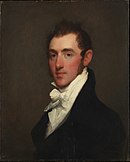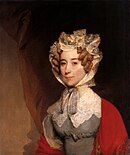
Gilbert Stuart
Gilbert Stuart (né Stewart; December 3, 1755 – July 9, 1828) was an American painter born in the Rhode Island Colony who is widely considered one of America's foremost portraitists.[2] His best-known work is an unfinished portrait of George Washington, begun in 1796, which is usually referred to as the Athenaeum Portrait. Stuart retained the original and used it to paint scores of copies that were commissioned by patrons in America and abroad. The image of George Washington featured in the painting has appeared on the United States one-dollar bill for more than a century[2] and on various postage stamps of the 19th century and early 20th century.[3]
For other uses, see Gilbert Stuart (disambiguation).
Gilbert Stuart
July 9, 1828 (aged 72)
Painting
George Washington (The Athenaeum Portrait) (1796)
George Washington (Lansdowne portrait) (1796)
George Washington (Vaughan portrait) (1795)
The Skater (1782)
Catherine Brass Yates (1794)
John Adams (1824)
Stuart produced portraits of about 1,000 people, including the first six Presidents.[4] His work can be found today at art museums throughout the United States and the United Kingdom, including the Metropolitan Museum of Art and Frick Collection in New York City, the National Gallery of Art in Washington, D.C., the Philadelphia Museum of Art in Philadelphia, the National Portrait Gallery in London, Worcester Art Museum in Worcester, Massachusetts, and the Boston Museum of Fine Arts.[5]
By the end of his career, Gilbert Stuart had painted the likenesses of more than 1,000 American political and social figures.[43] He was praised for the vitality and naturalness of his portraits, and his subjects found his company agreeable. John Adams said:
Stuart was known for working without the aid of sketches, beginning directly upon the canvas. His approach is suggested by the advice which he gave to his pupil Matthew Harris Jouett: "Never be sparing of colour, load your pictures, but keep your colours as separate as you can. No blending, tis destruction to clear & bea[u]tiful effect."[18] Although this is an exaggeration to avoid muddiness, Stuart's colors were remarkably fresh. At Stuart's best, he had an extraordinary ability to convey the impression of "luminous, transparent flesh" with color coming from beneath. The face seemed to be embued with life, while the beauty of its coloring conveyed a spiritual quality to contemporaries. [45] Although uneven, he could produce astonishingly strong likenesses. [46]
John Henri Isaac Browere created a life mask of Stuart around 1825.[47] In 1940, the U.S. Post Office issued a series of postage stamps called the "Famous Americans Series" commemorating famous artists, authors, inventors, scientists, poets, educators, and musicians. Gilbert Stuart is found on the 1 cent issue in the artists category, along with James McNeill Whistler, Augustus Saint-Gaudens, Daniel Chester French, and Frederic Remington.
Today, Stuart's birthplace in Saunderstown, Rhode Island, is open to the public as the Gilbert Stuart Birthplace and Museum. The birthplace consists of the original house where he was born, with copies of his paintings hanging throughout the house, as well as a separate art gallery in which are displayed several original paintings by both Gilbert Stuart and his daughter Jane. The museum opened in 1931.[48]
Gilbert Stuart's paintings of Washington, Jefferson, and others have served as models for dozens of U.S. postage stamps. Washington's image from the famous portrait The Athenaeum is probably the most noted example of Stuart's work on postage.
This is a partial list of portraits painted by Stuart.[49]
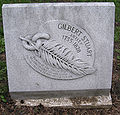

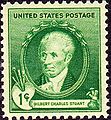

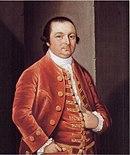
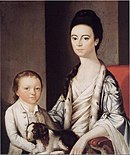


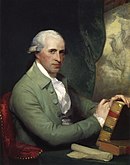









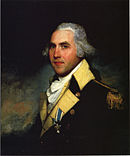



![Mrs. Hepzibah [Clarke] Swan, 1808, Museum of Fine Arts, Boston](http://upload.wikimedia.org/wikipedia/commons/thumb/2/20/Gilbert_Stuart_-_Mrs._James_Swan_%28Hepzibah_Clarke%29_-_27.539_-_Museum_of_Fine_Arts.jpg/130px-Gilbert_Stuart_-_Mrs._James_Swan_%28Hepzibah_Clarke%29_-_27.539_-_Museum_of_Fine_Arts.jpg)



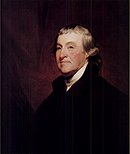




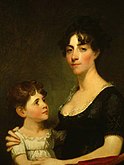




![Major-General Henry Dearborn 1812–1815[?]](http://upload.wikimedia.org/wikipedia/commons/thumb/5/53/Gilbert_Stuart_-_Major-General_Henry_Dearborn_-_1913.793_-_Art_Institute_of_Chicago.jpg/130px-Gilbert_Stuart_-_Major-General_Henry_Dearborn_-_1913.793_-_Art_Institute_of_Chicago.jpg)
